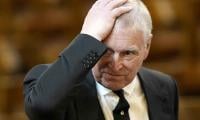ISLAMABAD: The World Bank (WB) has estimated that poverty in Pakistan has increased from 4.4 per cent to 5.4 per cent. More than two million people have fallen below the poverty line in Pakistan.
The WB used the lower-middle-income poverty rate ($3.2 per day) and estimated that the poverty ratio in Pakistan stood at 39.3 per cent in 2020-21 and is projected to remain at 39.2 per cent in 2021-22 and might come down to 37.9 per cent by 2022-23.
By using the upper middle-income poverty rate ($5.5 per day) methods, the WB estimated that the poverty stood at 78.4 per cent in 2020-21 and it would be standing at 78.3 per cent in 2021-22 and is projected to come down to 77.5 per cent in 2022-23. The World Bank’s Macro Poverty Outlook on Pakistan stated that the incidence of poverty is estimated to have increased in FY20 from 4.4 to 5.4 per cent, using the international poverty line of $1.90 per day, with more than two million people falling below this poverty line. Moreover, 40 per cent of households suffered from moderate to severe food insecurity.
At a time when the WB has been showing rising trends in poverty, the government has just released poverty figures for 2018-19 and indicated that the poverty declined from 24.3 per cent in 2015-16 to 21.9 per cent in 2018-19 in the pre-COVID-19 period.
The WB stated that the government, therefore, focused on mitigating the adverse socioeconomic effects of the pandemic, and the IMF programme was temporarily put on hold. However, the containment measures adopted in response to the COVID-19 pandemic led to a collapse in economic activity during the final quarter of FY20. As a result, the GDP growth is estimated to have contracted by 1.5 per cent in FY20. Half of the working population saw either job or income losses, with informal and low-skilled workers employed in elementary occupations facing the strongest contraction in employment. As a result, the poverty incidence is estimated to elementary occupations facing the strongest contraction in employment. As a result, the poverty incidence is estimated to have increased in FY20 from 4.4 to 5.4 per cent, using the international poverty line of $1.90 per day, with more than two million people falling below this poverty line. Moreover, 40 per cent of households suffered. The WB stated that major risks to the outlook include the possibility of new waves of infections, the emergence of new vaccine-resistant strains, and setbacks in mass vaccinations. In addition, more delays in the implementation of critical structural reforms could lead to further fiscal and macroeconomic imbalances.
Pakistan’s economy has been growing slowly over the past two decades. The annual per capita growth has averaged only 2 per cent, less than half of the South Asia average, partly due to inconsistent macroeconomic policies and an under reliance on investment and exports to drive economic growth. Short periods of rapid consumption-fueled growth frequently led to sizable current account and fiscal deficits, that ultimately required policy tightening, resulting in recurrent boom-bust cycles (Figure 1).
In early FY20, which runs from July 2019 to June 2020, following one such episode of external and fiscal imbalances, the country entered a 39-month IMF Extended Fund Facility. The associated adjustment measures, including fiscal consolidation, contributed to a reduction in the imbalances over the year and improved macroeconomic stability.
The Pakistani rupee appreciated by 5.4 per cent against the US dollar, from end-June 2020 to end-December 2020, and the official foreign exchange reserves increased to $14.9 billion at end-December 2020, equivalent to 3.3 months of imports of goods and services. The public debt including guaranteed debt, reached 87.9 per cent of GDP at end-December 2020, up from 86.7 per cent of GDP at end-December 2019.
In the future outlook, the WB says that the output growth is expected to recover gradually over the medium term, averaging 2.2 per cent over FY21-22, mostly due to contributions from private consumption. However, the sectors that employ the poorest, such as agriculture, are expected to remain weak, and therefore poverty is likely to remain high. The baseline outlook is predicated on the absence of significant infection flare-ups that would require more extensive lockdowns. The current account deficit is projected to narrow to 0.8 per cent of GDP in FY21, as a wider trade deficit is offset by stronger remittances inflows. However, it is expected to increase over the medium term. Exports are projected to grow from FY22 onwards, as external conditions become more conducive and tariff reforms gain traction, but imports are also expected to increase in line with stronger domestic activity and higher oil prices.
While fiscal consolidation efforts are expected to resume, the deficit is projected to remain elevated at 8.3 per cent of GDP in FY21, partly due to the settlement of arrears in the power sector. As critical revenue-enhancing reforms gain pace and expenditure rationalization efforts resume, the fiscal deficit is projected to gradually narrow over the medium-term. Still, the public debt will remain elevated in the medium term, as will Pakistan’s exposure to debt-related shocks, the WB concluded.















